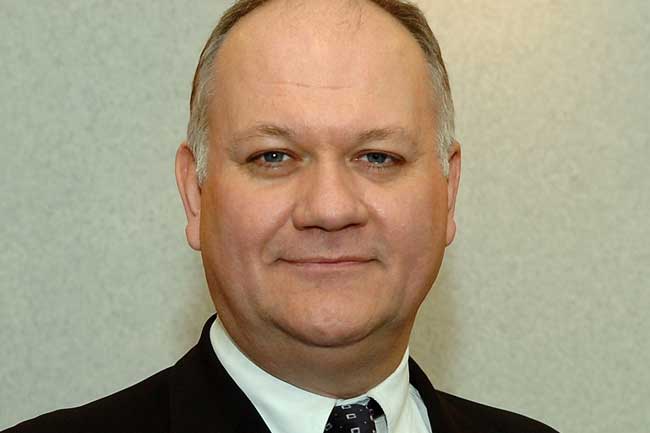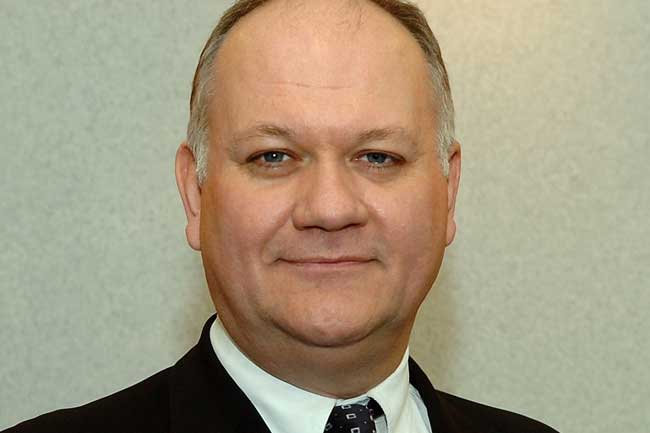

The Global Vice President of computer technology giant Intel might not be seem the most likely evangelist for sticky little yellow Post-It notes as the next great workplace productivity breakthrough.
But then Gordon Graylish isn’t afraid to call out radical change where he sees it.
After decades of enduring technology enabled misnomers like the paperless office and a delusion that email enhances productivity, the man charged with running Intel’s Enterprise Solutions Sales division clearly doesn’t mind demolishing trendy visions of what the future of work will look like.
Speaking in Melbourne at a recent conference hosted by the National Australia Bank of what the future of workplaces will be like, Graylish is clearly convinced that the days of highly structured, rigidly defined and overtly hierarchical organisational culture are numbered.
Sometimes the cut-through technologies used to empower and enable the new breed of ultra-modern office offices that thrive on hot desks, scatter cushions and ‘wireless everything’, aren’t what always you’d always expect.
“Everyone thinks that [new technology enabled work structures look like] Minority Report – really, really whizzy and fancy,” Graylish observes before throwing up a PowerPoint slide that looks like it might have come from the political satire The Hollowmen.
“In reality … it looks like [paper] sticky notes and flip charts – if you are lucky. If you are doing things well, you are doing it that way,” Graylish says, pointing to the picture that looks a little like the aftermath of office supplies Christmas party.
“You are getting people to work together, [people] that are addressing issues and knocking down barriers and that’s awesome. Except it’s not quite as neat, and clean, and flowing as it might be . . .”
“As it might be” seems to be Graylish’s codeword for managing down any expectation that using disruption to spur on productivity in the workplace can actually be regulated out or circumvented.
He’s adamant that many of the established formalised structures of what is considered ‘work’ will fall through though the imperative of necessity.
Replacing them will be far more fluid and generally smaller groups of people who “swarm” together literally as required to tackle problems, challenges or issues and then quickly move onto the next thing when they’re needed or wanted on.
Instead of holding endless meetings, teams are formed more or less organically and then engage in ‘sprints’ towards tacking a goal.
Graylish also contends that the biggest productivity leaps don’t stem from getting rid of formal organisational structures per se but learning when not to adhere to them. If that sounds rather confronting for the middle aged or middle managers, it’s meant to.
“People are working in the collective. The sense of formal structure is not working in the sense that it has in the past. The answer is not to change those formal structures, but to have people work outside of those structures,” Graylish says.
There will still be bosses and accountability, but the demarcation lines between how different parts of an organisation will inter-relate will get a lot more blurry.
Part of that blurring will be a push to generate a greater number fresh ideas more quickly and often in a raw and less formalised state than has come to be expected. If that sound a bit loose and sloppy, it’s a state that Graylish believes managers need to be more tolerant of to extract real creative or innovative value.
“Don’t wait until [ideas or concepts are] polished – you have to bite your tongue and accept the fact that when people present ideas it is early in the process,” Graylish says of the evolving ‘agile’ culture of collaborative creative group work and problem solving.
“That’s good. That says it’s working. That takes a real major transformational change in the company.”
It may be an uncomfortable shift, but the payoff for organisations seeking to boost productivity and innovation is a big one.
Graylish says that Intel started with “collaborative space” goal of 45 per cent in its offices. In simple terms that meant redesigning offices and workplaces so that almost half of the available area could be used for flexible group work.
Over seven iterations of this, Graylish says that Intel now has 55 per cent of its workspace available for collaborative work and that employee feedback now reckons it should be at 60 per cent.
Driving that change is the recognition that “not a single department at Intel had more than 60 per cent of people at their desk at any one time.”
“In fact, on average, around 60 per cent of cubicles were empty,” Graylish says. “So we have taken large parts of our organisation and made them hotel, or not a specific desk.”
The contrast with static desk culture could not be more profound.
“If we look at [workplace] facilities it’s a larger shift but easier to achieve,” says of the move to open and collaborative design that does away with row after row of semi-open mini-offices that have been dubbed ‘cubicle farms’.
“We were actually innovators in the 1970s and coming up with this wonderful thing called the cubicle,” Graylish says. “Dilbert would have been really happy in our offices.”
However the switch is not as easy as it may first appear, especially if key elements of good design are overlooked.
“You have to be very careful when you do this, you can’t make it a hostile environment,” Graylish says.
A good way to get collaborative workspaces wrong is to neglect environmental considerations like noise attenuation, privacy and necessary flexibility to have places that ad-hoc meetings can occur.
Graylish’s most ardent criticism is for facilities and building design that is not taking account of the new ways of working, whether it’s putting in sufficient room for cabling or designing meeting rooms.
“Today many companies have facilities totally separate from technology. So you end up with these bizarre situations where the facilities [people] don’t care anything about the technology. It used to be that you had to staple cables to walls,” Graylish says
“Increasingly I think we are saying no, we have to have flexible work spaces that are open,” he adds, noting that based on feedback from clients, just maintaining a conference room can cost up to $1000 per year because of calls to tech support to find missing cables or sort out disconnected equipment.
Whether government organisations can embrace the new open workspace culture is open to debate.
Although ‘clean desk’ policies that require potentially sensitive materials to be locked up when unattended have been in place in most security designated areas for years, it’s a different story when public sector employees are required to move around with a tablet or laptop and then stow them at the end of the day.
The open working phenomenon also adds a new dimension for government organisations looking for office spaces on the commercial market.
If one assumes that eventually most corporate workplaces in private enterprise head down the open plan path, governments will be left with the choice of following the trend or specifying a very different facilities fit out to what the market has to offer.
Of all the metrics and measurements Intel’s Graylish has to offer on collaborative working, one figure stands out as the clincher for buyers: the amount of physical real estate needed under the collaborative and open model is 30 per cent less than traditional offices and energy costs are also substantially lower.
That number in itself may provide incentive enough for experimentation and a shift for private and public sector offices alike – regardless of whether or not staff actually like it or not.
If you have a desk, enjoy it while it lasts.
Comment below to have your say on this story.
If you have a news story or tip-off, get in touch at editorial@governmentnews.com.au.
Sign up to the Government News newsletter
